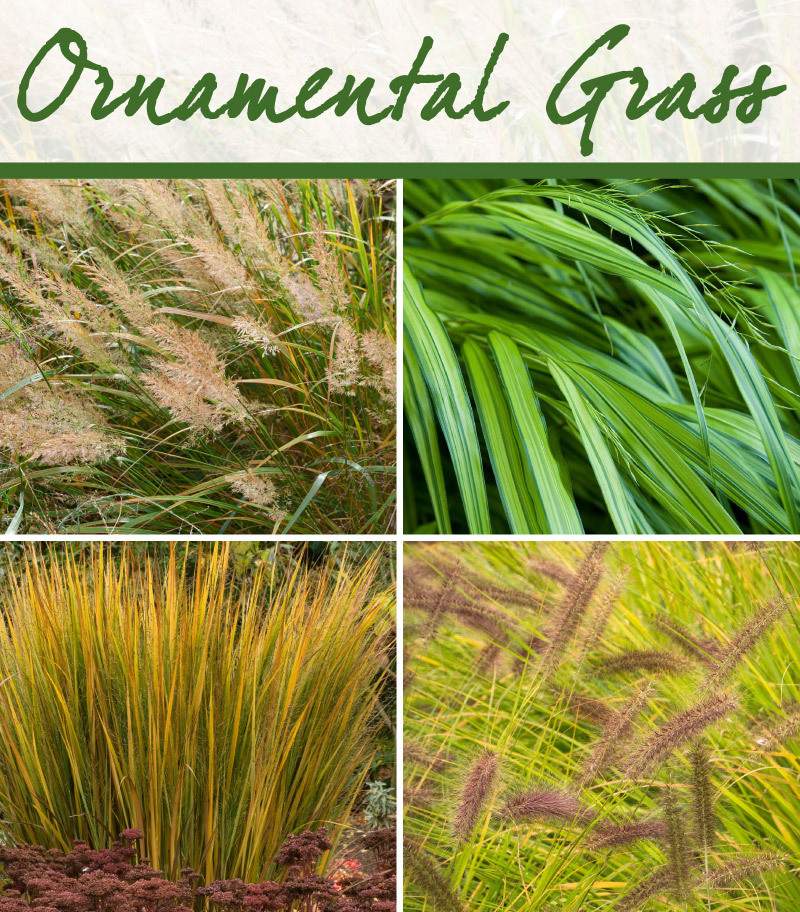I’m a Mover & Shaker
Perennial of the Week: Ornamental Grasses
Ornamental grasses bring movement and texture to your garden. These aesthetically pleasing plants can be tall or small, and may love the hot summer sun or a shadier locale.
Ornamental grasses provide interest throughout multiple seasons, and are relatively low-maintenance plants since they do not require fertilizer or mowing. In addition to being heat, drought, and salt tolerant, these stoic plants also resist disease, pests, and deer. Consider using grasses as a roadside buffer, groundcover, or even in container plantings.
At Rohsler’s, we grow approximately 100 varieties of ornamental grasses for sun, shade, and partial shade. About half of those varieties are native species.
In general, grasses fall into one of two categories:
Cool season grasses, which actively grow when temperatures are cooler in fall and spring and even grow roots in the dead of winter. Many of these plants thrive in the shade, and are semi-evergreen to evergreen.
Warm season grasses usually want to bask in the sun. They bloom during the late summer and fall.
Ornamental grasses make excellent companion plants for bulbs and ephemerals (plants that bloom and “disappear” back into the ground after spring for a summer dormancy). Extend the life of your garden by combining ornamental grass that will begin to grow as your Virginia Bluebells, Shooting Star, or spring-blooming bulbs are taking their final bow of the year.
Cool season grasses add life to a bulb garden that includes miniature Daffodils, Crocus, Iris reticulata, Siberian Squill, Glory of the Snow, and more.
Do not cut your ornamental grasses before winter. In addition to providing winter interest in your garden, these plants are habitat for wildlife, and the old foliage protects the crown of the plant. Keeping your plants uncut prevents the “doughnut effect” that results when the center of a plant dies due to excessive moisture and freezing in the crown and rootstock, which causes the grasses to grow up in a circle around the dead spot.
Tip: If the foliage becomes unsightly, simply fold it down to the ground.
Among the dizzying variety of grasses we offer (in Rohsler’s Grown pots, of course) are Carex, and Hakonechloa, which enjoy shade. This last type of grass, Hakonechloa or Japanese forest grass, enjoys shade and its yellow variegation will light up these areas. The green leafed form, Hakonechloa macra, will tolerate more sun and even drought.
Sesleria, a shorter, cool season grass, will do well in part sun to part shade and performs admirably in the driest of places. Its early season flowers are also welcome when spring bulbs are starting to bloom.
Long-blooming Siberian Frost Grass, a warm season grower, thrives in moist soil, sending up frosty-looking blooms in summer, and produces auburn, yellow, and green foliage in fall.
Oak Sedge, Carex pensylvanica, a native to our woodlands, can be used as a low-maintenance alternative to traditional lawn grasses in shadier areas. Oak Sedge grows well in dense shade, and does not require mowing or fertilization, but is not “step-able,” and is not intended for high-traffic areas. Other sedges can also be used in a similar manner. They will grow well under trees and withstand the root competition.
When selecting ornamental grasses, keep in mind that the blooms and seed heads may be much taller than the plant’s foliage. However, many of these blooms can provide a see-through, transparent element in the landscape.
Pink Muhly Grass is a late-blooming ornamental that offers up transparent pink blooms that pair beautifully with fall-blooming Sedum or Echinacea seed heads that American Goldfinches love.
We have the very best selection of ornamental grasses in the area – and our experts are waiting to answer all of your questions about these varied and versatile plants. Stop by today!

